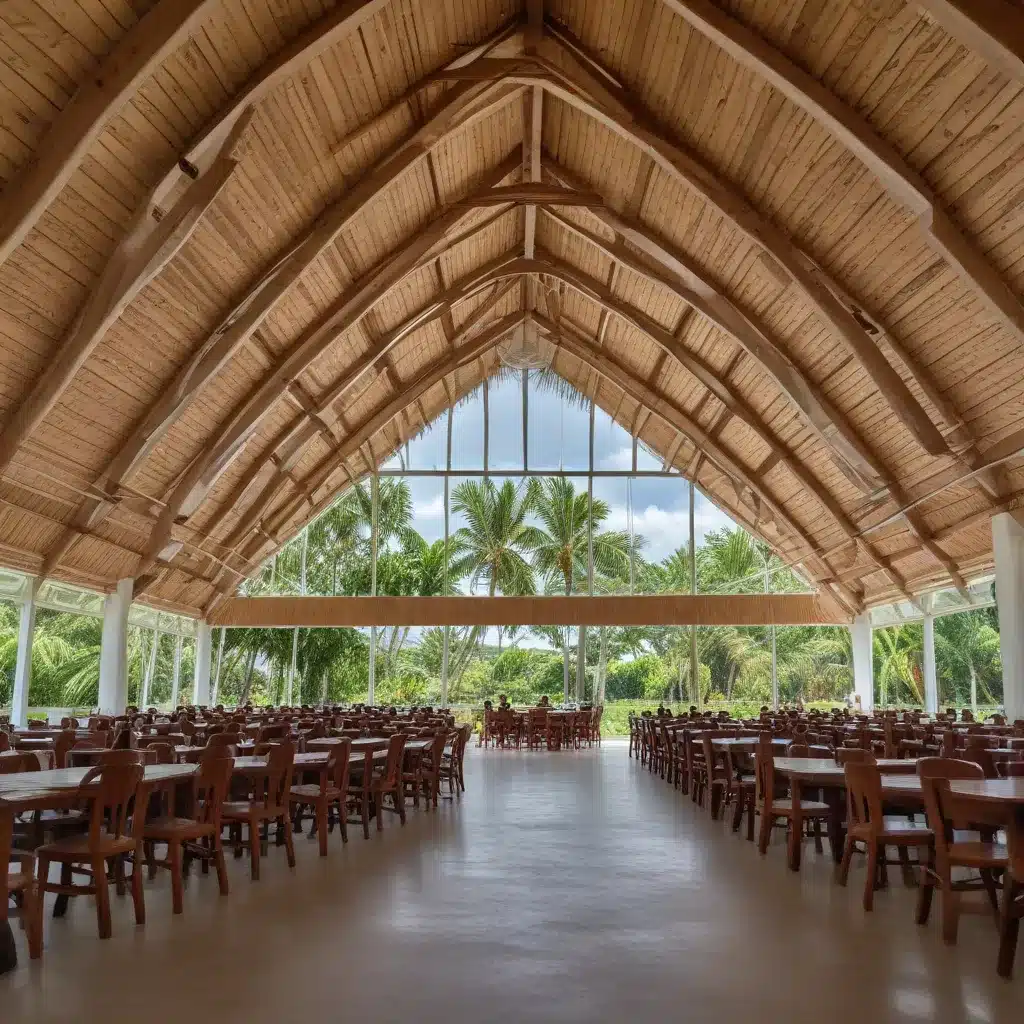
Nestled in the azure waters of the South Pacific, the Cook Islands are a true gem of Polynesian culture and heritage. As a seasoned cultural historian and curator, I’m thrilled to take you on a captivating journey through the architectural marvels that grace these picturesque islands.
Polynesian Roots and Influences
The Cook Islands’ rich cultural tapestry is deeply rooted in its Polynesian ancestry. Centuries of voyages, migrations, and cross-cultural exchanges have imbued the islands’ built environment with a unique blend of traditional and modern elements. From the iconic Kenyatta Conference Center in Rarotonga to the intricate limestone formations of Aitutaki, each structure offers a window into the islands’ storied past.
The Kenyatta Conference Center: Nestled in the heart of Rarotonga, the Kenyatta Conference Center stands as a testament to the Cook Islands’ enduring connection to its Polynesian heritage. Designed by renowned architect Sir Miles Warren, the building’s striking architectural features seamlessly integrate traditional Polynesian motifs with contemporary design. The soaring, thatch-roofed structure, inspired by the iconic Cook Islands’ vaka (outrigger canoes), immediately captivates visitors with its bold, sweeping lines and intricate detailing.
As you step inside, you’re enveloped by a warm, inviting atmosphere that reflects the islands’ rich cultural traditions. The use of natural materials, such as locally sourced kōpū (pandanus) and rito (coconut) leaves, pays homage to the islands’ sustainable building practices. The interplay of light and shadow, created by the intricate patterns of the thatched roof, evokes a sense of timelessness and connection to the natural world.
Historical Insights
The Kenyatta Conference Center’s architectural design is not merely a aesthetic choice; it is a carefully crafted reflection of the Cook Islands’ complex history. The building’s name, a nod to the renowned Kenyan statesman Jomo Kenyatta, serves as a poignant reminder of the islands’ colonial past and their journey towards self-governance.
During the colonial era, the Cook Islands experienced a significant shift in their built environment, as European influences began to shape the architectural landscape. The introduction of new building materials and techniques, such as corrugated iron roofs and concrete foundations, gradually transformed the islands’ traditional thatched-roof structures. However, the resilience of the Cook Islands’ people ensured that Polynesian design elements remained a integral part of the islands’ built heritage.
Rarotonga: The Heartbeat of the Cook Islands
Rarotonga, the largest and most populous of the Cook Islands, serves as the cultural and administrative center of the archipelago. It is here that the Kenyatta Conference Center stands as a shining example of the islands’ architectural prowess. The building’s strategic location, nestled within the bustling capital of Avarua, allows it to serve as a hub for cultural exchange, political discourse, and community gatherings.
Beyond the Kenyatta Conference Center, Rarotonga’s architectural landscape is a tapestry of traditional and modern structures. The island’s marae (sacred meeting places) and pā (fortified settlements) offer a glimpse into the islands’ precolonial past, while the colonial-era churches and government buildings showcase the enduring impact of European influences.
Aitutaki: Lagoons and Limestone Formations
While Rarotonga may be the administrative heart of the Cook Islands, the island of Aitutaki is a true architectural gem. Known for its stunning lagoons and dramatic limestone formations, Aitutaki’s built environment seamlessly blends with the natural landscape.
The island’s traditional vaka houses, with their thatched roofs and elevated platforms, are a testament to the ingenuity of the Cook Islands’ builders. These structures, designed to withstand the Pacific’s harsh elements, are not merely functional; they are works of art, showcasing the intricate weaving techniques and traditional decorative motifs that have been passed down through generations.
Alongside the vaka houses, Aitutaki is also home to the renowned Aitutaki Lagoon Resort, a luxury destination that pays homage to the island’s architectural heritage. The resort’s bungalows and communal spaces feature clean lines, natural materials, and subtle Polynesian influences, creating a harmonious fusion of modern comforts and traditional design.
Preserving the Past, Embracing the Future
As the Cook Islands continue to evolve, the preservation of their architectural heritage has become a crucial priority. The Cook Islands Library and Museum, a renowned institution dedicated to the islands’ cultural legacy, plays a pivotal role in this endeavor.
Through educational programs, community outreach, and the curation of impressive exhibits, the library and museum ensure that the Cook Islands’ architectural wonders are not only preserved but also celebrated. Visitors can immerse themselves in the islands’ rich history, witnessing traditional craft demonstrations, exploring archaeological findings, and gaining a deeper understanding of the cultural significance behind the islands’ built environment.
Eco-Tourism and Community Engagement
The Cook Islands’ commitment to sustainability extends beyond the preservation of their architectural heritage. The islands have embraced eco-tourism initiatives that showcase their natural beauty while empowering local communities. Sustainable outdoor activities, such as guided hikes, kayaking excursions, and traditional vaka canoe tours, offer visitors the opportunity to experience the islands’ landscapes in an environmentally conscious manner.
Moreover, the Cook Islands encourage community engagement through volunteer programs and cultural exchange opportunities. Visitors can participate in workshops, learn traditional building techniques, and even contribute to the restoration and maintenance of the islands’ iconic structures. This hands-on approach fosters a deeper appreciation for the Cook Islands’ architectural wonders and the communities that have nurtured them.
Conclusion
As you explore the architectural marvels of the Cook Islands, you’ll be captivated by the seamless integration of Polynesian heritage and modern design. From the soaring thatch-roofed Kenyatta Conference Center to the limestone formations of Aitutaki, each structure serves as a testament to the resilience, creativity, and cultural richness of this remarkable archipelago.
Through the preservation of their architectural legacy and the embrace of sustainable eco-tourism, the Cook Islands invite you to embark on a journey that transcends time and space, where the past and present converge in a stunning display of Polynesian ingenuity and artistic expression. So, pack your bags and get ready to immerse yourself in the architectural wonders that define the heart and soul of the Cook Islands.

